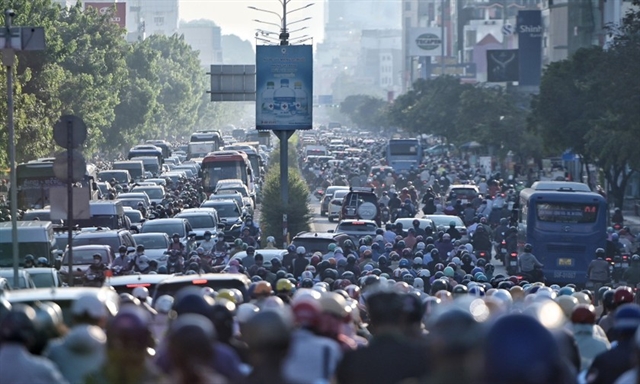

|
| This winter, people in the North experience cold and dry for many days. Photo suckhoedoisong.vn |
HÀ NỘI – Since early December, Hà Nội has experienced only two days of light rain, with rainfall below 1mm -- not even enough to wet the ground.
In prior years at this time, the city typically sees between four and 10 rainy days, ranging from drizzle to heavy downpours reminiscent of summer storms.
The absence of rain is unusual for the first half of the winter season. Additionally, daytime temperatures in the city’s Hà Đông area have frequently exceeded 20°C.
Over the past month, there have only been eight days with temperatures below 20°C, fewer than in recent years.
Experts attribute the unusual winter weather to two factors.
First, cold air fronts are continually arriving, but retain their dry characteristics as they travel directly from China to Việt Nam without gaining moisture, resulting in prolonged dry conditions.
Second, the absence of upper-level jet streams prevents strong cold air surges from descending deep into the region, limiting cold spells despite strong cold air masses in China.
Meanwhile, the World Meteorological Organisation (WMO) has warned that this winter may see unusual weather patterns due to a weak La Niña expected to persist into spring.
La Niña, the cool phase of the El Niño-Southern Oscillation (ENSO) cycle, is characterised by cooler-than-average sea surface temperatures in the central and eastern Pacific Ocean, with a temperature deviation of at least 0.5°C below average.
This phenomenon typically alters atmospheric circulation and global weather patterns.
Unlike El Niño, which brings warming effects, La Niña often causes colder winters in North America, increased rainfall in Australia, and intensified hurricane activity in the Atlantic.
While La Niña conditions have not yet fully developed, atmospheric indicators suggest typical characteristics: stronger trade winds, reduced rainfall in the Pacific, more frequent and intense hurricanes in the Atlantic and irregular drought and rainfall patterns globally.
In Hà Nội and northern Việt Nam, the first half of winter has seen fewer cold days and drier conditions than usual.
However, globally, severe winter conditions have been observed, with record snowstorms affecting Japan, South Korea, the US and parts of Europe.
According to meteorological authorities, cold air activity is expected to strengthen in January and February, with temperatures near the long-term average.
Northern Việt Nam may therefore still experience severe cold spells.
Between now and the end of February, the region is expected to experience two to three cold waves, each lasting three to five days.
During the Lunar New Year (Tết) from January 25 to February 2, temperatures in northern and north-central Việt Nam, including Hà Nội, are likely to be cold, with short cold snaps possible, said Nguyễn Văn Hưởng, head of the Weather Forecasting Department at the National Centre for Hydrometeorological Forecasting.
According to long-term statistics, this period typically sees around 3.8 days of severe cold weather, Hưởng said.
Central provinces may experience cold rains due to cold air interactions with the region's terrain, while the Central Highlands and southern regions are expected to remain dry and warm.
The cold air activity early this year may be more frequent than in late 2024, potentially bringing severe cold spells lasting five to seven days, especially in northern Việt Nam from late January to early March.
Mild wet spells with drizzle may occur from mid-February to early March, particularly in northern provinces like Thanh Hóa and Nghệ An.
So far, northern Việt Nam has not experienced prolonged cold spells this winter.
Cold snaps have typically lasted only one to two days before temperatures quickly rebounded due to sunny, dry conditions, he said. VNS















.jpg)

.jpg)





